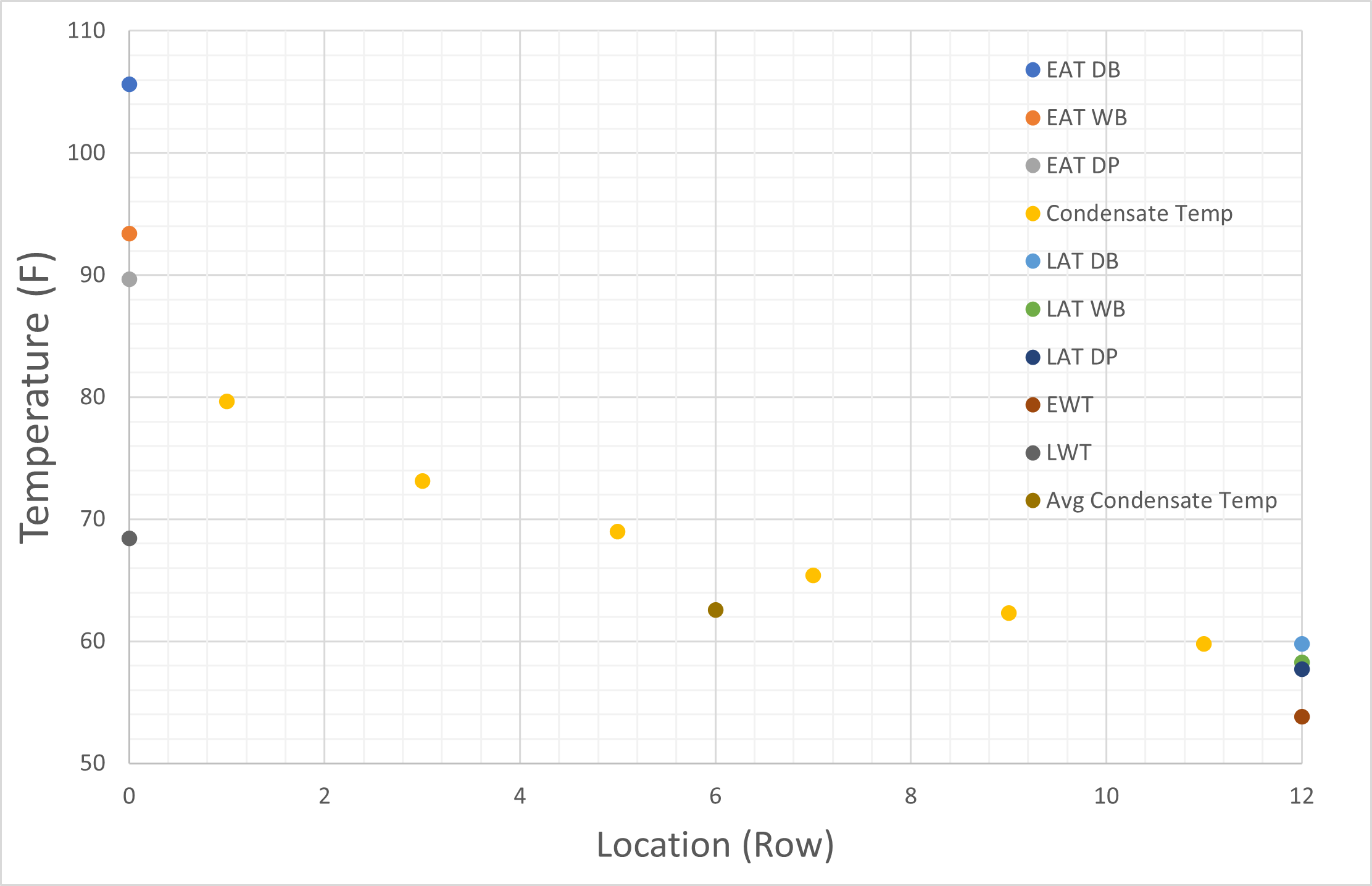When moist air passes through a cooling coil, the potential exists for that moisture to condense on the coil's surface. The temperature at which that occurs is known as the condensing temperature or the dew point.
When condensation occurs, the temperature of the resulting condensate is known as the condensate temperature, often called wet-bulb temperature. While these terms are frequently used interchangeably, the results of a recent study conducted by SRC’s R&D team could indicate that the value for each is not always the same.
According to thermodynamic convention, the wet-bulb temperature is determined by air pressure and humidity. The condensate usually remains on the cold coil surface before being removed either by gravity, the velocity of the air stream, or a combination of the two.
In formulas found in the 2020 edition of the ASHRAE handbook “HVAC Systems and Equipment,” condensate temperature is used as the wet-bulb temperature when calculating system-specific heat transfer performance. This is the standard method in the industry, but our hypothesis is that this formula fails to account for variance in the condensate’s temperature at different areas of the coil as well as the impact of additional values in the system.
In this study, a 12-row cooling coil was tested under fully wetted surface conditions. The condensate temperature profile along the airflow direction as well as the averaged condensate temperature were measured under different inlet humidities and face velocities. The test results indicate that the condensate temperature may not necessarily be the wet-bulb temperature. Rather, the condensate temperature fluctuates throughout the coil based on variables such as air temperature, inlet humidity, air velocity, water temperature, and water velocity.
The graph below illustrates this variance at different locations throughout the coil. More testing is needed before definitive conclusions can be drawn, but we found the results of this initial test to be interesting. If further testing confirms our initial hypothesis, it could mean that using the conventional industry formula may contribute to the overrating or underrating of heat exchangers. The cause and extent of this phenomenon are yet to be determined.

Don’t get left out in the cold when it comes to heat transfer information. To stay up to date on a variety of topics on the subject, subscribe to The Super Blog, our technical blog, Doctor's Orders, and follow us on LinkedIn, Twitter, and YouTube.



